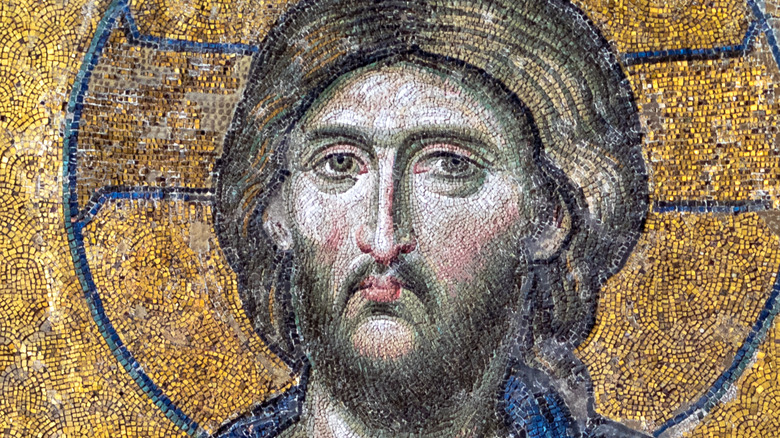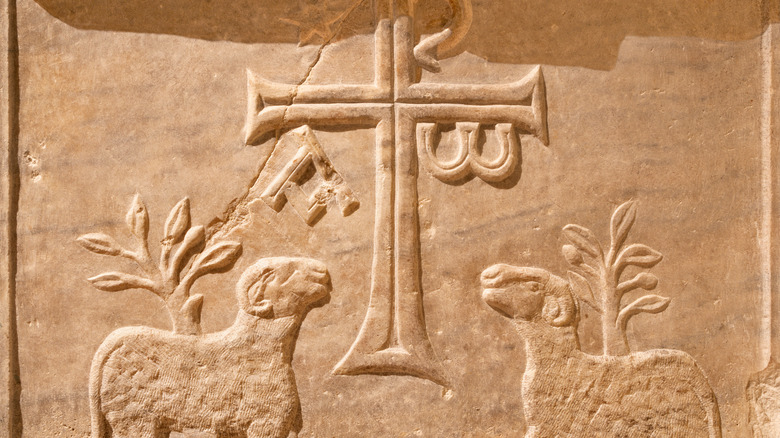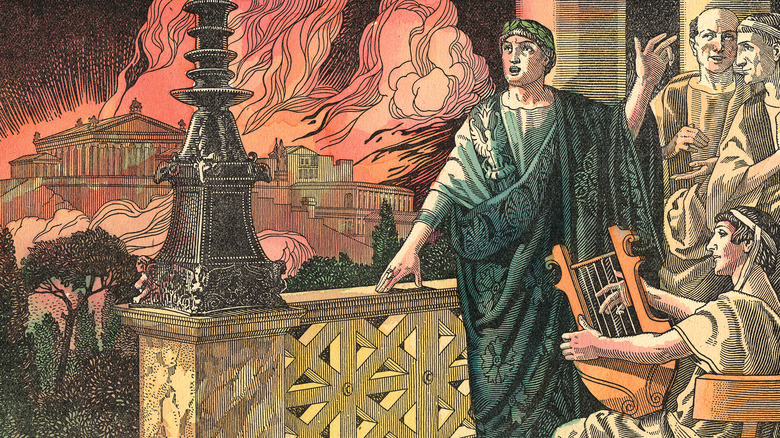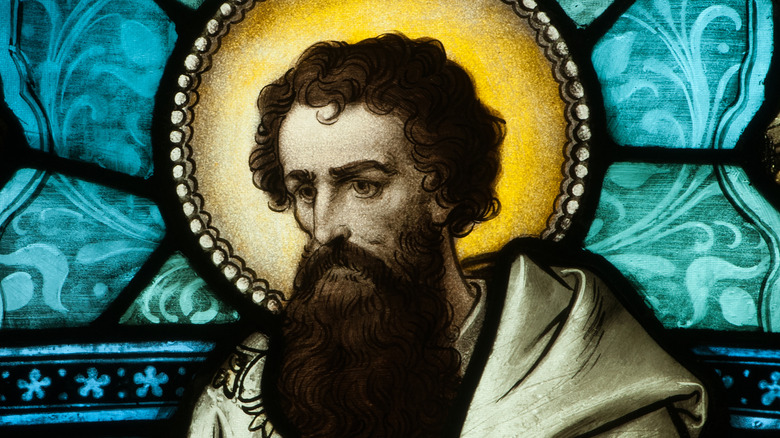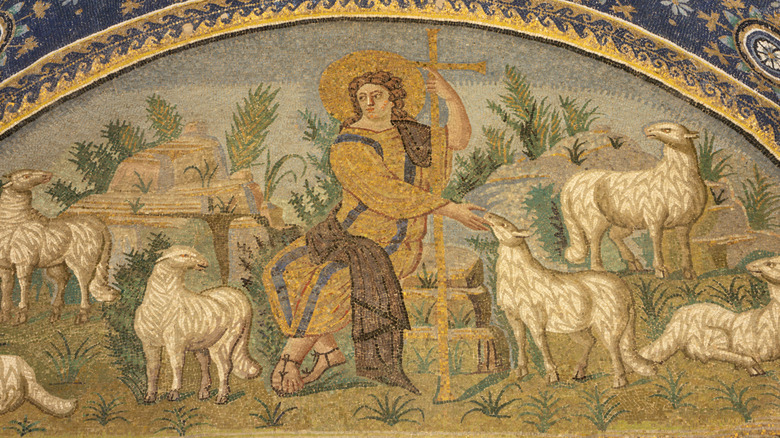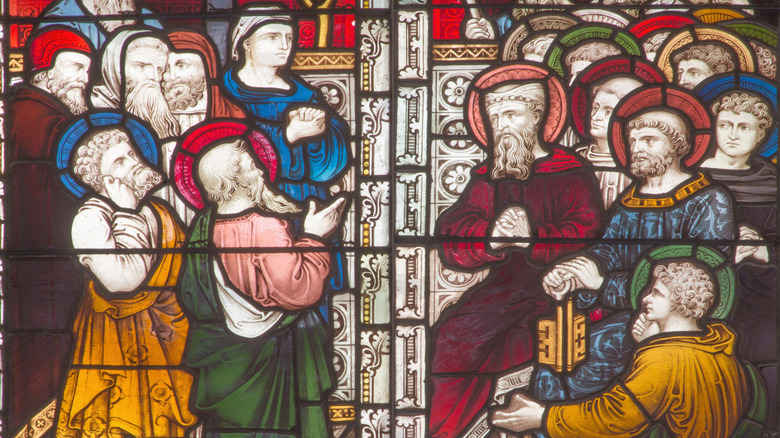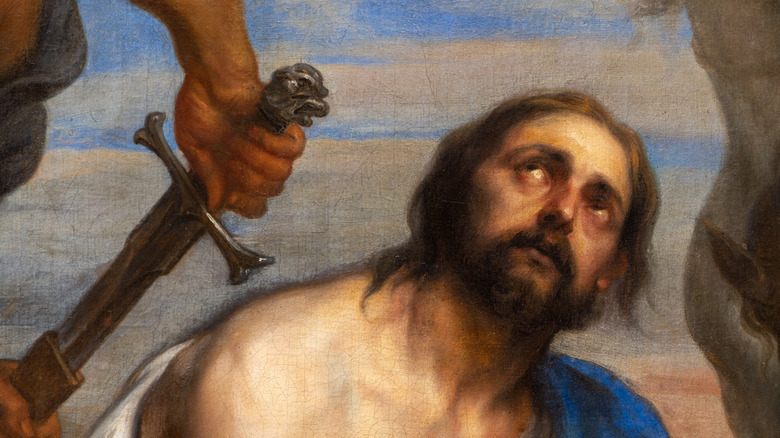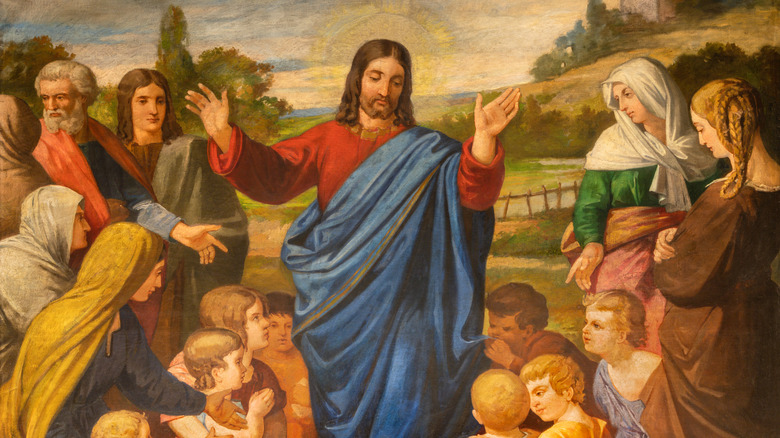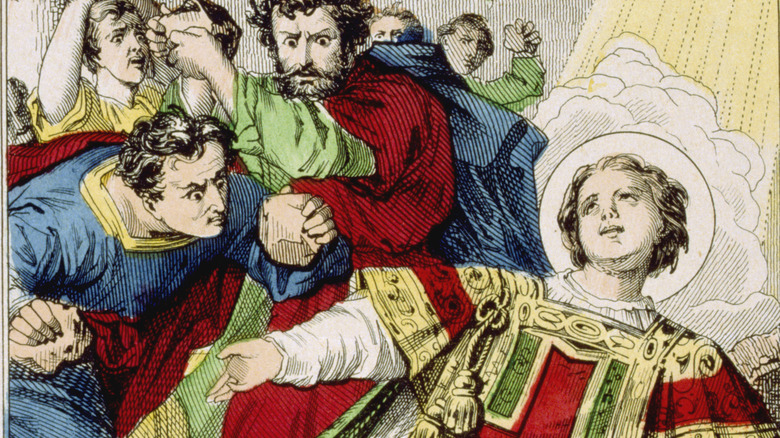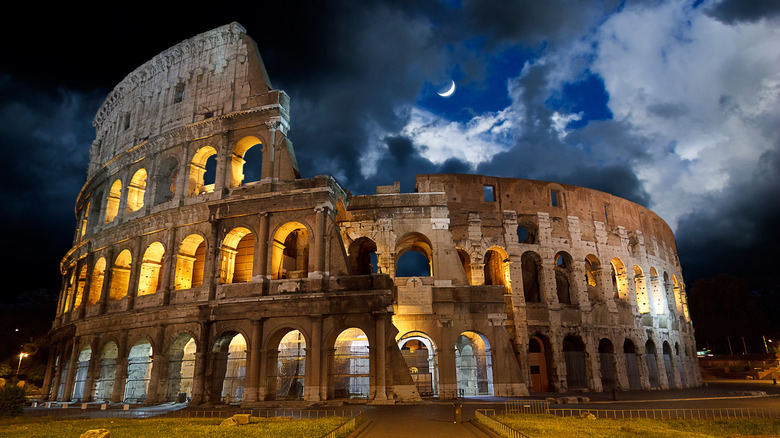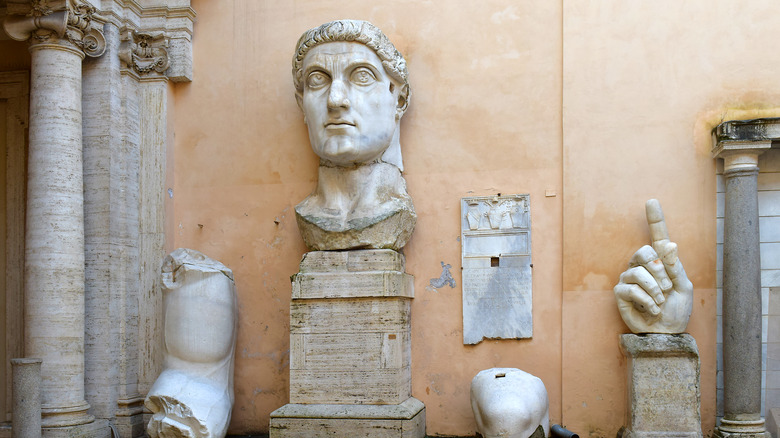What It Was Really Like Being An Early Christian In The Roman Empire
Christianity proved an unlikely seed to take hold, flourish, and blossom in a Roman world where bloodlust and cruelty reigned supreme. Human suffering represented a commodity exploited to thrill crowds in the gladiatorial ring. And cruelty permeated every aspect of society, from the empire's endless military ambitions to its wholehearted embrace of slavery.
As Alvin Schmidt of Regent University reports, "Whether through infanticide, gladiatorial games, glorification of suicide or human sacrifice there was an almost global attitude that human life was cheap before Christianity." But the Judeo-Christian tradition offered another view of humanity, one with human beings created in the image of God. Both religions placed a premium on human life, translating into an ethos of compassion relatively unknown in the Empire.
Christians represented a light in a very dark world. Their beliefs gave rise to innovations driven by benevolence, including orphanages, hospitals, and charitable organizations to feed the poor. But this stunning contrast between Roman and Judeo-Christian values contributed to inevitable tensions. Here's what you need to know about what it was like to be an early Christian in the Roman Empire.
These sandals are made for walking
Early Christians faced much opposition within the Roman Empire. But they also took advantage of some of its amenities, especially its intricate network of Roman roads. These marvels of the ancient world made possible the incredible voyages of early Christians such as Paul, who traveled 10,000 miles within the empire (via PBS). His trips included visits to some of the most sophisticated metropolitan centers there.
His message proved so compelling to the masses because, despite the grandeur of these urban areas, they also contained barely concealed social problems. "Although places like Ephesus, Philippi, Corinth and Athens looked magnificent, they were also home to tens of thousands of poor, desperate people who were the perfect audience for the Christian message of eternal life," notes PBS. The spread of Christianity wasn't entirely a conscious effort, however.
Warfare and the fall of Jerusalem in A.D. 70 led to the diaspora of Jewish and Christian communities alike, notes Christianity Today. These forced journeys led to the establishment of Judeo-Christian communities around the known world. These groups transported their forms of worship, scriptural studies and insights, and charitable activities as pilgrims, reports Plough. The sporadic persecutions faced by these communities, including imprisonment, made Christian communities very close-knit as they relied on one another for preservation. Christian parishes, the basic building blocks of each community of believers, were also referred to as "households of faith," as per Plough, reflecting their intimate structuring as spiritual tribes.
They didn't call themselves Christians ... until they did
Being an early Christian in the Roman Empire meant embracing a changing identity. Nowhere in the four Gospels does Jesus refer to his followers as "Christians" or by any other label, per Relevant Magazine. The first believers in Jesus called one another "saints" or members of "The Way." Both of these terms had deep religious significance.
The term "saints" comes from the Greek word hagios, meaning "consecrated to God, holy, sacred, pious." In other words, Jesus' followers identified most closely with how they lived out their faith. Since the word almost always appears in the plural form, they also emphasized a corporate faith rather than one of isolated individuals. As for "The Way," it has origins in the Hebrew concept of halakhah, referring to "the way a Jew is directed to behave, encompassing civil, criminal, and religious law" (via My Jewish Learning). While both terms emphasized relationship with God, neither one implied a break with the overarching principles of contemporary Judaism.
Where did the word "Christian" come from? It first appears in Acts 11:26 when the leaders at Antioch give the name to believers in Christ. Relevant Magazine argues that the term marked an awareness and new understanding of a religious shift. As Jesus' followers came to embrace these changing perceptions, they would soon adopt the term. Over time, this identity shift would also signify movement away from Christianity's Jewish heritage towards a stand-alone religion.
Early Christians relaxed the rules
Jesus taught primarily to a Jewish audience, according to PBS. But as his teachings incorporated an increasingly numerous gentile population into its ranks, this came with new problems.
Specific rules existed within Judaism that local Jewish communities and nearby populations understood and followed. But gentiles had little comprehension of these expectations. Although some, known as "God-fearers," attended synagogue and cultivated a respect for Jesus, other non-Jewish converts came out of a firmly pagan background (via Bible Study Magazine).
The vast majority of gentile males were uncircumcised. And as for dietary restrictions? The concept of unclean foods proved complicated and burdensome, as explained in Path of Obedience. Disciples such as Peter and Paul struggled with how to bring gentiles into the fold. A revelation Peter received during an open vision recorded in Acts 10 provided clarity to some but confusion to others.
Ultimately, according to PBS, as more non-Jewish members joined the movement, these rules were relaxed. This created a bit of a divide, and thus Christianity was born.
Persecution came swiftly and unexpectedly
For Christians living in the Roman Empire, persecution came in capricious waves, per the Christian History Institute. Before Jesus' execution, he warned his followers to expect persecution, as reported by the C.S. Lewis Institute.
Of the 54 emperors who ruled between A.D. 30 and A.D. 311, roughly 12 made Christians public enemies. But many small-time local rulers also sporadically persecuted the growing body of believers, with the blessing of the empire, of course. One of the most vicious periods of violence against Jesus' followers occurred under Emperor Nero, who famously went after Christians in A.D. 64 (via History). Why? Because they marked a convenient scapegoat in the wake of the Great Fire of Rome that devoured the capital on July 18 that year.
According to PBS, Nero attempted to divert attention away from his own mistakes during the fire by making Christians a "scapegoat." He had them crucified, burned alive, and even fed to wild animals. Regional persecutions fluctuated based on individual emperors' beliefs. But empire-wide harassment of Jesus' followers came in the 3rd century when Emperor Decius took the throne. Successors, like Valerian and Diocletian, continued to ratchet up the pain felt by Christians until Emperor Constantine's conversion brought persecution to an end in A.D. 312.
Physical churches weren't a thing
Before formal churches, state religions, weighty edicts, and intractable orthodoxies, a small body of believers existed. According to Learn Religions, the first Christians had no distinct physical locations to gather for worship. Instead, groups met in each other's homes for fellowship and teachings.
The Apostle Paul mentions some of these meeting spots by name, including the house of married converts, Priscilla and Aquilla, in Romans 16:3-5. Little is ultimately known about how the teachings of Jesus got a firm foothold in Rome. But Paul's Epistle to the Romans confirmed that house-hopping remained the favored way for the first Christians to come together, according to The Bible Says.
Fifty thousand Jews lived in the city of Rome during Paul's lifetime. Many proved receptive to the Gospel message. These Jewish believers attended synagogue and met at Christian households for teaching, communion, fellowship, and edification (via Facing History). There the first believers kept Torah (the law outlined in the first five books of the Old Testament), according to author and Messianic Christian apologist David Wilber. Yale scholar and pastor Jaroslav Pelikan (via PBS) seconds this claim: "It is obvious — and yet, to judge by the tragedies of later history, not at all obvious — that Jesus was a Jew, so that the first attempts to understand his message took place within the context of Judaism."
They lived in close-knit countercultural communities
Organized into parishes, groups of Christians could better meet the needs of local communities (via Plough). But it's worth noting that "parish" is just one letter away from "pariah," which speaks volumes about how Christians got seen and treated in the early days.
As outcasts and refugees, they forged close-knit communities where communal care took precedence over individual needs. Day-to-day activities included serving the poor, visiting and providing aid to imprisoned church members, other forms of economic sharing, and religious studies and worship.
"This group of people was redefining community in a radical and unprecedented way, so much so, that a new word was needed to categorize what in the world was happening," as per Relevant Magazine. As Christians of every background spread the gospel message and attempted to follow the teachings of Jesus of Nazareth, it sent shock waves through the ancient world, bringing Jews and gentiles together as never before seen.
Some felt like second-class citizens
Being an early follower also came with increased criticism for the first Greek and Roman adherents of Jesus' teachings, per Relevant Magazine. After all, the strong stigma associated with being a gentile could make Greco-Roman converts feel like uncircumcised, Mosaic Law-breaking second-class citizens. This situation got exacerbated when one of Jesus' Apostles, Peter, quit mingling with his non-Jewish brethren due to pressure from other religious leaders.
In Galatians 2:11-17, Paul admonishes Peter for this hypocritical stance. The passage demonstrates how unresolved issues simmered beneath the surface of the early church. Paul notes that Peter, who once took meals with gentiles, started avoiding them when Jewish leaders from Jerusalem arrived. Soon, other Jewish followers of Jesus did the same, causing an ever-expanding rift. Hence, Paul's public confrontation of Peter. While one can only guess how gentile believers in Antioch felt about the situation, the implication that they were less Christian than Jewish believers hung in the air. So did the notion these Christ-followers were somehow unclean or unworthy.
The Council of Jerusalem in Acts 15 was meant to put questions about Jewish versus gentile believers to rest. During the council, church leaders concluded that as long as non-Jewish Christians avoided a few basic sins (like sexual immorality, eating meat sacrificed to idols, and consuming improperly slaughtered animals), circumcision and keeping all of Jewish law would not be required of them (via Britannica).
Life as a Christian might be short-lived
For the first followers of Jesus, martyrdom could come unexpectedly, as Faith on Hill Church details the deaths of the 12 Apostles. During Nero's reign, Roman authorities beheaded Paul in Rome, and they crucified Peter. According to some accounts, Peter asked to be crucified upside down as he didn't feel worthy to share in Jesus' manner of death. Tradition also tells us that both deaths occurred in A.D. 66 and may have happened around the same time.
Whether by the sword, stoning, or clubbing, the other Apostles fared little better. While their deaths remain unrecorded in the New Testament, apart from James' death in Jerusalem at the hands of King Herod (via Acts 12), early church history speaks of violent ends in all cases but one. John, the author of the Gospel of John, lived to a ripe old age exiled on the island of Patmos, where he penned the New Testament's Book of Revelation, as per Amazing Bible Timeline.
But you didn't have to be an Apostle to face a grim fate as an early Christian, according to Early Church History. The first Christian martyr, Stephen, died from stoning to death in Jerusalem (via Acts 7:54-60). Ironically, the pre-Christian Paul (then, Saul of Tarsus) oversaw his execution (via Acts 8:1-2). In A.D. 62, James the Just, Jesus' brother, died after getting thrown from a roof and stoned, notes Britannica. Women also endured persecution. Thecla, a convert of Paul, survived two attempted martyrings (via Christianity Today). And Perpetua and Blandina, a slave woman, died horrific deaths involving public torture
Religious arguments could get confusing
Because of Jesus's short ministry and violent death, early church leaders had to deal with many unanswered questions. These involved not only queries about how Jewish a Christian must be but also the very nature of who Christ was. Arguments could get abstract and confusing, as exemplified by the debate over "low Christology" and "high Christology."
"Low Christology," as per the Xavier University of Louisiana, refers to the idea that Jesus proved as human as any other person walking the planet, apart from his liberation from sin nature. As for "high Christology," it argues that Jesus, as a part of the Holy Trinity, brought his divinity to Earth and was all-knowing, per the Xavier University of Louisiana. Another area for debate involved the nature of the Holy Trinity. For example, the famed Arian controversy involved a group of believers led by scholar Arius, who argued that the Trinity represented three separate deities rather than one Supreme God in three forms, according to Britannica. On the other side of the argument was theologian Athanasius, who preached that, essentially, God and Jesus were of the same substance, according to Christianity Today.
Other notable leaders would arise to refute what they saw as Arius' heresy, including Augustine. Perceiving Arian theology as a significant threat, he confronted these teachings directly in his work titled "Arianism and Other Heresies." As Britannica notes, these arguments also became political, threatening the stability of the Roman Empire, as church leaders and emperors changed their positions.
Jews and Christians (kinda) got along for centuries
Tensions inevitably flared between Jews and Christians. After all, Jesus famously argued with various leaders within Judaism, as per Learn Religions, including the Sadducees and Pharisees (via Matthew 16:1). And the first Christian martyr, Stephen, got stoned to death by a crowd of non-Christian Jews after making a religious defense before the rabbinic court, as per Britannica. Later, the revolving doors of persecution would swing the other way, with great atrocities perpetrated against Jewish communities by those claiming to be Christian, as reported by the United States Holocaust Memorial Museum.
But many scholars also think there's another story of relatively peaceful cohabitation (and even co-worship) between Jewish and Christian groups that existed for roughly 400 years (via PBS). This shouldn't come as a surprise. After all, as Reading Acts notes, the origins of Christianity were "entirely Jewish."
That said, the New Testament doesn't reflect much of this history because of the tumultuous times during which it was written. First-century Palestine, as the Romans called it (via the Jewish Virtual Library), proved a powder keg waiting for the slightest spark. And the only thing that compared to the hatred between Jews and their Roman occupiers was the great internal strife within Judaism. As PBS notes, the New Testament tells the story of the broken relationship between the Jews and Christians that points to later repercussions.
Unfortunate Christians could end up in the gladiatorial arena
Emperor Septimius Severus carried out the fifth persecution of Christians beginning in A.D. 192, according to Bible Study Tools. This meant many believers in Jesus met their end in the gladiatorial arena as tortured objects of Roman entertainment. The Christian History Institute tells us that by A.D. 202, Severus banned Roman conversion to Judaism and Christianity, ramping up the momentum of violence. Those who ignored Severus' laws faced cruel and inventive punishments. Beheading, immolation, attack by wild animals, scalding baths, and more ... all in front of a live audience.
Among the victims were a 22-year-old noblewoman, Perpetua, and her slave Felicitas (via Christianity Today). A handful of male converts, including Satur, Saturninus, and Revocatus, would share in their arena fate. The men ran a gauntlet of "hunters" and wild animals, whipped and savagely attacked along the way (via Bible Study Tools). Officials stripped the two women and threw them into the gladiatorial arena with a "wild heifer" followed by a leopard, as per Christianity Today.
But the crowd's bloodlust remained unsatisfied, and they called for the deaths of all in the ring, meted out at the sharp end of a gladiator's sword. Despite these horrors, many early Christians remained undeterred and even edified. As "Foxe's Book of Martyrs" notes, "Though persecuting malice raged, yet the Gospel shone with resplendent brightness; and, firm as an impregnable rock, withstood the attacks of its boisterous enemies with success" (via Bible Study Tools).
Going mainstream came with new problems
When Emperor Constantine issued the Edict of Milan in A.D. 313, Christianity received formal legalization, according to Khan Academy. After centuries of persecution, this sudden, radical acceptance by a Roman emperor left many Christians breathing a sigh of relief. And with good reason.
The Christian History Institute reports that, although his personal life remained largely unaffected by the conversion, Constantine delved into immediate public action on behalf of Christians. He set policies on the return of property and status for those who were persecuted, church construction funding, and curbing pagan worship, as Christian History Institute notes. But the repercussions of Roman appropriation of the faith soon followed as the emperor demanded a unified, clearly organized religion. Third-century Christianity proved far from it.
Constantine stumbled into a belief system beset by entrenched in-fighting. Debates covered everything from the nature of the Holy Trinity to the role Jewish traditions should play and even controversy over Christ's divinity. The emperor pushed for the formal adoption of an orthodoxy by calling the Council of Nicaea, and the resulting Nicene Creed represented an attempt to get all believers on the same page. Of course, this meant exclusion for those who refused to negotiate. Khan Academy notes that many other Christian groups lost their legal status because they were considered heretical, and they also had their property seized by the empire. These believers traded the frying pan for the fire, proving that new challenges followed going mainstream.
